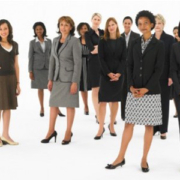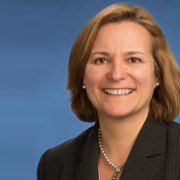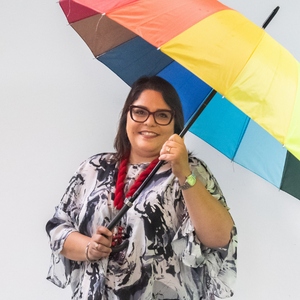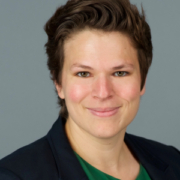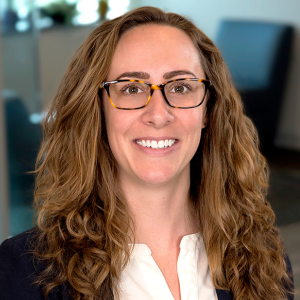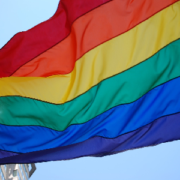LGBTQ+ Culture is Changing: Are Companies Ready to Redefine Inclusion?
 Generational change is redefining how we relate to identity, particularly among LGBTQ+ people. The traditional ‘category’ approaches to D&I have helped to form the basis of anti-discrimination policy, but are not suited to creating inclusion.
Generational change is redefining how we relate to identity, particularly among LGBTQ+ people. The traditional ‘category’ approaches to D&I have helped to form the basis of anti-discrimination policy, but are not suited to creating inclusion.
Last June, federal protections passed in the Supreme Court for LGBTQ+ people at work and the vast majority of Fortune 500 companies have strong non-discrimination policies. Yet policy is not the same as culture. Building inclusion requires weaving through every single level and interaction of an organizational culture.
As Boston Consulting Group (BCG) authors, in “A New LGBTQ Workforce Has Arrived—Inclusive Cultures Must Follow“, point out: “Yet despite these efforts, the unavoidable fact is that most LGBTQ employees do not feel truly included in the workplace.”
The LGBTQ+ Community Is Radically Changing
According to BCG, many organizations are failing at inclusion because they are failing to understand the changing and holistic identities of today’s LGBTQ+ community. BCG conducted a survey of 2,000 LGBTQ+ employees and 2,000 straight employees, in partnership with NYC LGBT Community Center, in March 2020.
They found the younger generations of the LGBTQ+ community look very different to their predecessors, and these differences matter.
Among the sample, 54% of the LGBTQ+ workforce is women, but that rises to 71% of those aged 25 to 34 and 78% of those age 18 to 24 (Gen Z). The number of women identifying as bisexual is rising strongly, and there’s a marked increase across all genders in those identifying as multiple sexual orientations or ‘other’ orientations.
For example, among the 45-54 LGBTQ+ cohort, 57% identified as gay, 17% as lesbian, 29% as bisexual and only 7% as other. Compare that to the 25-34 cohort – where 15% identified as gay, 15% as lesbian, but 47% as bisexual and 23% as other.
The younger LGBTQ+ workforce is also far more racially diverse than their older counterparts. Only 7% of 55+ LGBTQ+ people are nonwhite, whereas 53% are nonwhite among 18 to 24 year olds. Only 5% among 55+ are Hispanic, whereas 34% of the Gen Z group identify as such. And only 2% of the 55+ community identity as women of color, but 28% among under 35 years do.
“Today’s LGBTQ workforce has undergone a fundamental, generational shift, both in how it defines itself and what it expects of workplace inclusion,” writes the BCG authors, also stating: “Consequently, the diversity, equity, and inclusion programs in place at many companies, while beneficial, are no longer sufficient.”
Persistent Gaps In Cultural Inclusion
LGBTQ+ people still experiences gaps in feeling open and comfortable at work.
BCG found that 40% of LGBTQ+ employees are not out at work, and among those who are, 54% are closeted with clients or customers. 36% have lied or “covered” parts of their identities in the past year. Three-fourths experienced at least one negative interaction related to their LGBTQ identity at work in the past year, with 41% experiencing more than ten.
According to McKinsey research, LGBTQ+ women are twice as likely as straight women to feel like an “only” in the room, to feel they can’t talk about life outside of work and to “play” along with uncomfortable sexual discussions and humor. They are about 1.5 times more likely to hear jokes about gender or sexist comments, and to have experienced sexual harassment.
BCG found that half of senior LGBTQ+ managers have experienced colleagues refraining from networking with them, though this is less reported among more junior levels, where the younger generation is more attuned and aware of inclusion.
“These numbers illustrate the difference between diversity (in which a company hires people from different backgrounds) and inclusion (those people feel free and encouraged to bring their authentic selves to work),” writes the BCG authors. “The gap between the two carries a steep price in terms of engagement.”
Culture Impacts The Ability to Thrive
When a person is able to be who they are, they thrive. When they do not feel they can be, or that they must edit themselves, their ability to show up suffers.
Back in 2018, Human Rights Campaign research found that 25% of LGBTQ empties stayed due to an inclusive culture and 10% left because of a non-inclusive culture.
BCG found that LGBTQ+ employees who routinely experienced discrimination were 13 times more likely to have quit a job and 7 times more likely to have declined a job offer because of company culture, compared to those who never experienced it.
“D&I leaders must focus on culture change in order to improve employees’ interactions with colleagues, direct managers, and leadership—what we call the ‘1,000 daily touch points.” writes the BCG research team. “Our research shows that breakdowns in these touch points are a major barrier to inclusion.”
Breakdowns are “comments or actions that highlight prejudice, demonstrate a lack of empathy, or make an individual or group feel isolated or unwelcome.”
When it comes to thriving in a culture, LGBTQ+ employees who did not experience discrimination, relative to those who routinely did, were far more likely to feel recognized for their full potential by their manager, feel they could risk the innovation of making mistakes and trying again and wanted to consistently do their best work.
Compared to closeted peers, out employees were twice as likely to feel safe to speak up. They were also 1.5 times more likely to feel recognized and empowered by their manager and safe to take creative risk.
McKinsey also reports that relative to closeted peers, out LGBTQ+ women leaders are more likely to feel they have equal opportunities and access to sponsors, and a positive and supportive relationship with their manager.
They’re also half as likely to plan to leave their current employer within a year.
Inclusion for All, As a “Segment of One”
Non-discrimination policies and practices, and equal access to benefits and resources, are now the baseline of D&I. But as BCG points out: “These programs tended to cover formal interactions but did not address daily, informal interactions. Nor were they meant to activate the entire workforce around inclusion.”
Inclusion occurs through the informal interactions that make up the 1,000 daily touchpoints of an individual experience. But traditional categorization approaches to D&I (of race, gender and ethnicity) can backfire here as relationships to identity evolve to be personal, intersectional, fluid and multiple, especially with younger generations.
Harvard Business Review (HBR) authors from Boston College found that “employees who identify in ways that do not conform to the norms used to define and categorize them at work are more likely to feel marginalized, and even threatened.”
When the way identity is represented is simplified and misaligned to the complexity with which an individual sees themselves, a person’s sense of “identity autonomy” and “identity legitimacy” are compromised. So is motivation, engagement, performance and satisfaction.
HBR authors found that organizations can no longer assume that identities can be naturally divided into singular or binary categories, that identities that individuals claim in one moment are fixed, that identities are self-certain, or even compulsory.
As BCG also highlights, several demographic factors and life factors contribute to a holistic identity that impacts how one LGBTQ+ person uniquely experiences the touchpoints within an organization. All of this means inclusion comes down to adopting a “segment of one” D&I lens that embraces the self-identified, overlapping and fluid nature of identities, now.
Grant Freeland, senior partner and managing director at BCG writes the “segment of one” approach is about: “accepting colleagues and co-workers as they are—and judging them on the basis of what they contribute to the greater good, not whether you approve or disapprove of the identity they embrace, or whether they make you ‘comfortable’ or ‘uncomfortable.’”
Inclusion is the current, nuanced and necessary organizational work of creating inclusion for everyone by fostering a culture that embraces each individual as he, she or they defines themselves.
By Aimee Hansen

